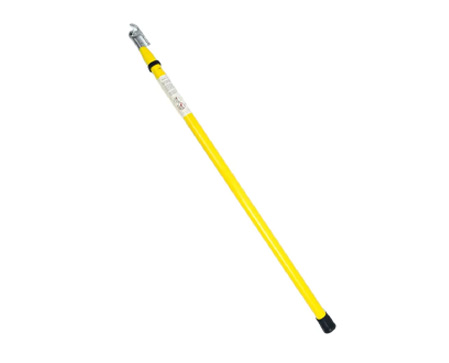
-
 Afrikaans
Afrikaans -
 Albanian
Albanian -
 Amharic
Amharic -
 Arabic
Arabic -
 Armenian
Armenian -
 Azerbaijani
Azerbaijani -
 Basque
Basque -
 Belarusian
Belarusian -
 Bengali
Bengali -
 Bosnian
Bosnian -
 Bulgarian
Bulgarian -
 Catalan
Catalan -
 Cebuano
Cebuano -
 Corsican
Corsican -
 Croatian
Croatian -
 Czech
Czech -
 Danish
Danish -
 Dutch
Dutch -
 English
English -
 Esperanto
Esperanto -
 Estonian
Estonian -
 Finnish
Finnish -
 French
French -
 Frisian
Frisian -
 Galician
Galician -
 Georgian
Georgian -
 German
German -
 Greek
Greek -
 Gujarati
Gujarati -
 Haitian Creole
Haitian Creole -
 hausa
hausa -
 hawaiian
hawaiian -
 Hebrew
Hebrew -
 Hindi
Hindi -
 Miao
Miao -
 Hungarian
Hungarian -
 Icelandic
Icelandic -
 igbo
igbo -
 Indonesian
Indonesian -
 irish
irish -
 Italian
Italian -
 Japanese
Japanese -
 Javanese
Javanese -
 Kannada
Kannada -
 kazakh
kazakh -
 Khmer
Khmer -
 Rwandese
Rwandese -
 Korean
Korean -
 Kurdish
Kurdish -
 Kyrgyz
Kyrgyz -
 Lao
Lao -
 Latin
Latin -
 Latvian
Latvian -
 Lithuanian
Lithuanian -
 Luxembourgish
Luxembourgish -
 Macedonian
Macedonian -
 Malgashi
Malgashi -
 Malay
Malay -
 Malayalam
Malayalam -
 Maltese
Maltese -
 Maori
Maori -
 Marathi
Marathi -
 Mongolian
Mongolian -
 Myanmar
Myanmar -
 Nepali
Nepali -
 Norwegian
Norwegian -
 Norwegian
Norwegian -
 Occitan
Occitan -
 Pashto
Pashto -
 Persian
Persian -
 Polish
Polish -
 Portuguese
Portuguese -
 Punjabi
Punjabi -
 Romanian
Romanian -
 Russian
Russian -
 Samoan
Samoan -
 Scottish Gaelic
Scottish Gaelic -
 Serbian
Serbian -
 Sesotho
Sesotho -
 Shona
Shona -
 Sindhi
Sindhi -
 Sinhala
Sinhala -
 Slovak
Slovak -
 Slovenian
Slovenian -
 Somali
Somali -
 Spanish
Spanish -
 Sundanese
Sundanese -
 Swahili
Swahili -
 Swedish
Swedish -
 Tagalog
Tagalog -
 Tajik
Tajik -
 Tamil
Tamil -
 Tatar
Tatar -
 Telugu
Telugu -
 Thai
Thai -
 Turkish
Turkish -
 Turkmen
Turkmen -
 Ukrainian
Ukrainian -
 Urdu
Urdu -
 Uighur
Uighur -
 Uzbek
Uzbek -
 Vietnamese
Vietnamese -
 Welsh
Welsh -
 Bantu
Bantu -
 Yiddish
Yiddish -
 Yoruba
Yoruba -
 Zulu
Zulu


Rgs . 13, 2024 09:47 Back to list
fish tape 90 degree
Understanding Fish Tape and Its 90-Degree Applications
Fish tape is an essential tool in the realm of electrical work and wiring. Its primary purpose is to facilitate the installation of electrical wires and cables through walls, ceilings, and conduit systems. By allowing electricians to navigate through tight spaces and bends, fish tape significantly simplifies the wiring process. Among the various configurations available, the 90-degree bend fish tape stands out, providing unique advantages for specific situations.
What is Fish Tape?
Fish tape is a long, flexible coil of plastic or metal that can be fed into walls or pipes to guide wires through hard-to-reach areas. The tool is typically wound around a spool, featuring a sturdy reel that allows for easy manipulation. Electricians use fish tape to push or pull wires through long runs, particularly in spaces where traditional methods would be cumbersome or impractical.
Advantages of 90-Degree Fish Tape
One of the critical aspects of the fish tape is its capability to navigate bends and corners. The 90-degree design allows electricians to efficiently maneuver through sharp turns, reducing the risk of damaging wires or cables. This feature is particularly useful in residential wiring, where corners and tight spaces can make the job challenging. By using 90-degree fish tape, electricians can save time and minimize the frustration often associated with complex routing.
fish tape 90 degree

When dealing with conduit bending or installation in older buildings, where the wiring pathways can often be convoluted, 90-degree fish tape provides a practical solution. It ensures that wires can be fed through tight angles without excessive force, thus preserving the integrity of both the tape and the wires being installed.
How to Use 90-Degree Fish Tape
Using 90-degree fish tape is relatively straightforward. First, an electrician inserts the tape into the conduit or wall cavity. By pushing the tape forward, they can navigate past obstructions and corners. Once the desired length has been fed through, the electrician attaches the electrical wire to the end of the fish tape. By carefully pulling back the tape, the wire is drawn into the conduit, seamlessly following the path created by the tape.
Proper technique is crucial when using fish tape to avoid damage. Electricians must ensure that they do not exert excessive force, as this can result in kinks or breaks in both the tape and the wires being pulled. By utilizing a steady hand and being mindful of the bends, they can successfully install wires through even the most challenging layouts.
Conclusion
In summary, fish tape, particularly in a 90-degree configuration, plays a vital role in streamlining electrical installations. Its design allows electricians to efficiently maneuver through tight spaces and corners, making it an indispensable tool for both professional electricians and DIY enthusiasts. Understanding its application can lead to safer, quicker, and more effective wiring projects, ensuring that electrical systems remain safe and functional. Whether you're a seasoned electrician or just starting, mastering the use of fish tape will significantly enhance your wiring capabilities.
Latest news
Your Best Choice for Duct Rodder and Fish Tape Wire Puller Tools
NewsAug.13,2025
Unlocking Efficiency and Precision with Premium Cable Tools and Equipment
NewsAug.13,2025
Smart Solutions with Precision: Cable Pulling Tools That Deliver
NewsAug.13,2025
Reliable Protection with Advanced Hot Stick Technology
NewsAug.13,2025
Reliable Cable Installation Tools at Your Fingertips
NewsAug.13,2025
Optimized Cable Laying with Heavy-Duty Solutions for Modern Projects
NewsAug.13,2025











